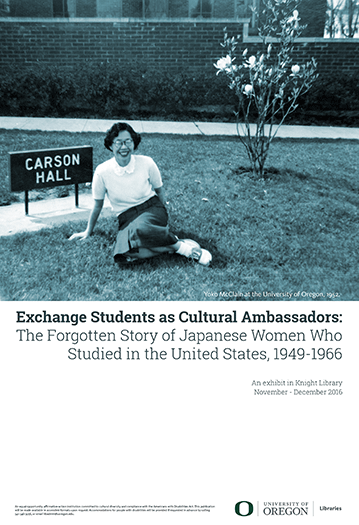“Between 1949 and 1966, at least 4,713 Japanese students studied at American universities with the best-known fellowships at the time—GARIOA (Government Account for Relief in Occupied Areas [1949 through 1951]) and Fulbright (established in 1952)—along with a few private scholarships. This group included 651 women. Among them were future leaders in fields as diverse as literature, medicine, economics, athletics, and political science. Yet the names of these women have been omitted from Cold War histories, accounts of women and travel, and discussions of the formation of academic disciplines and jobs…. These women’s story is one of history, memory, and empowerment. It has emotional meaning to me: it was inspired by my mentors and bridges the places I consider home: Oregon, Pennsylvania, and Tokyo. I focus on Japanese women who came to the United States under scholarships, rather than with personal sources of funding. These grants represent a belief in the power of education to shape international relations, a notion not as prevalent today.” — from “The Forgotten Story of Japanese Women Who Studied in the United States, 1949-1966,” by Alisa Freedman, 2016 CSWS Annual Review (pp. 12 -15).
Exchange Students as Cultural Ambassadors: The Forgotten Story of Japanese Women Who Studied in the United States, 1949-1966
 A Knight Library Exhibit: November 2016 – December 2016
A Knight Library Exhibit: November 2016 – December 2016
This exhibit, based on research supported by the Center for the Study of Women in Society and carried out by Alisa Freedman, are on display in the first floor Browsing Room cases at the UO Knight Library throughout November and December 2016.
Dr. Freedman, associate professor of Japanese literature and film, UO Department of East Asian Languages and Literatures, is a long-time CSWS faculty affiliate. Her CSWS funding for this project was drawn from the Mazie Giustina Endowment for Research on Women in the Northwest.

